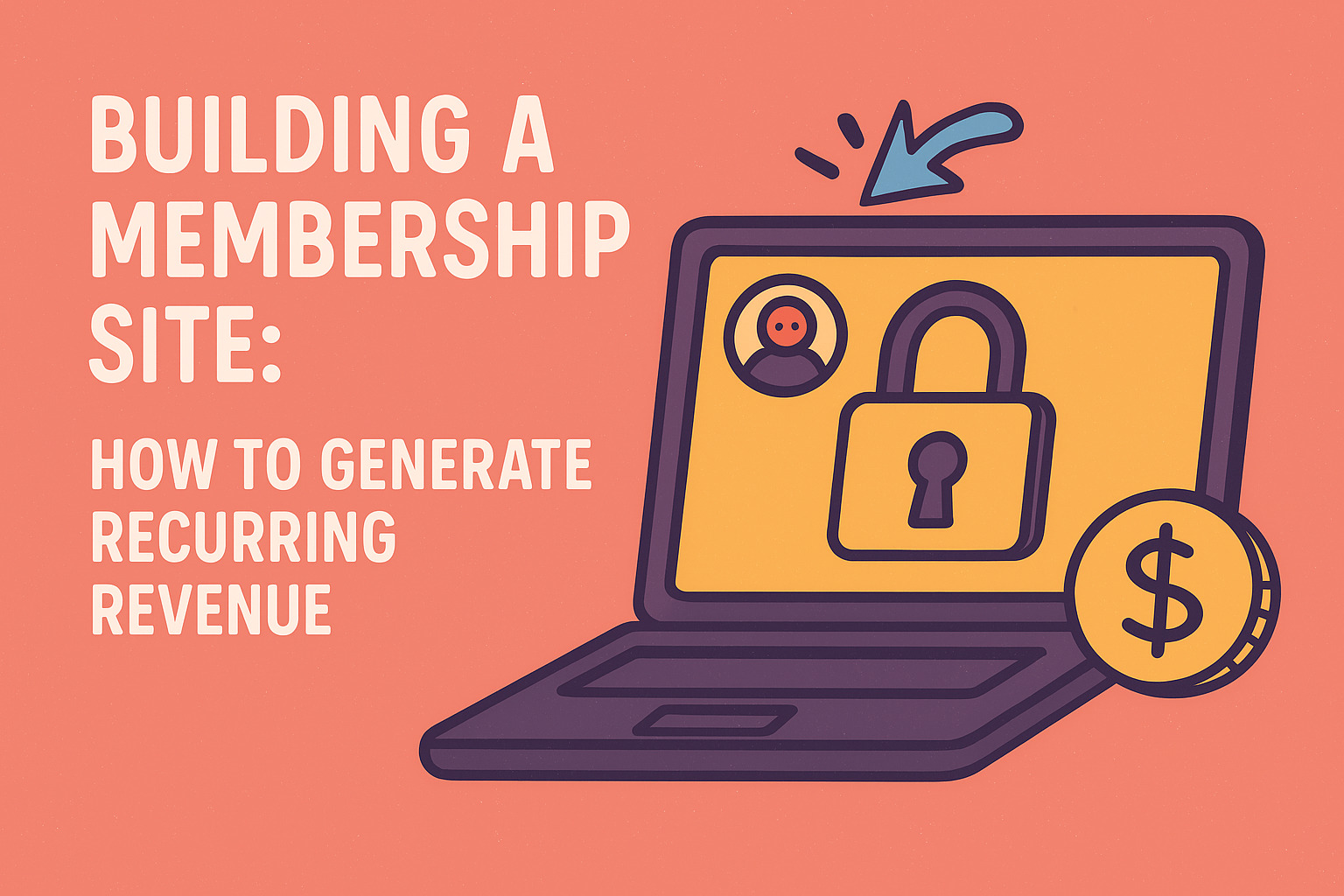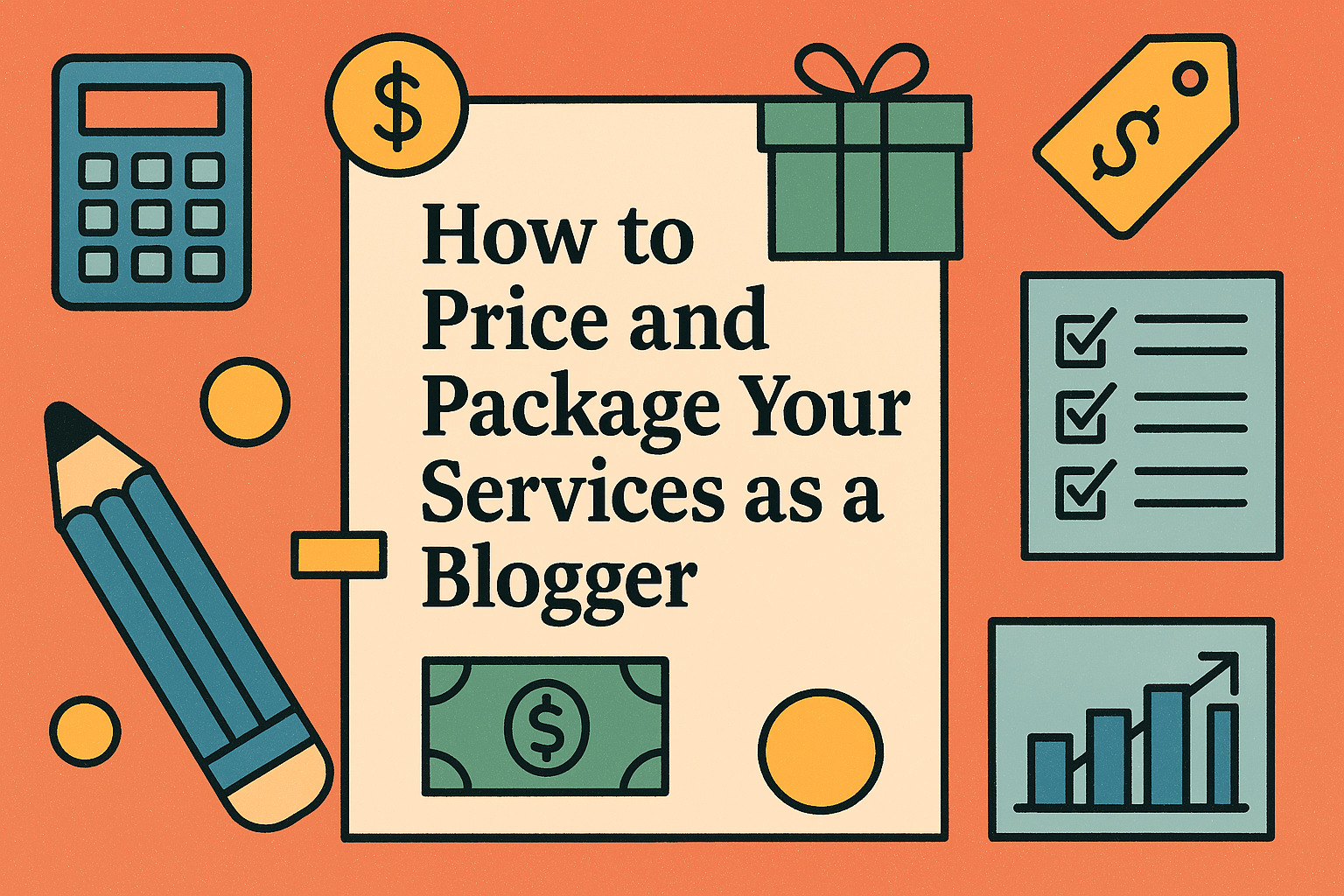Creating a Digital Product to Boost Blog Income
Making a digital product can significantly boost your blog’s income and is one of the most effective ways to monetize a blog, giving you a scalable way to turn your expertise into revenue without physical inventory. Unlike ads or affiliate links, digital products provide direct income from your audience and can strengthen your authority. Here’s a comprehensive look at how you can create and market digital products to maximize your blog’s earning potential.
1. Identify a Profitable Product Idea
Choose a product idea that aligns with your niche and audience needs. A successful digital product solves a specific problem, fills a gap, or enhances the reader’s experience.
- Survey Your Audience: Gather feedback through polls or surveys to discover what your readers would pay for.
- Analyze Blog Analytics: See which blog posts are the most popular—these can reveal high-interest topics ideal for a digital product.
- Research Competitors: Look at other blogs in your niche to understand what’s working well. Popular products in your niche can indicate demand.
2. Types of Digital Products for Bloggers
While creating a product can be highly profitable, many bloggers also consider affiliate marketing to add another income stream, which pairs well with the sales of digital products. Here’s a breakdown of digital products that suit various niches:
- E-books and Guides: E-books can compile your expertise into a structured resource.
- Templates and Printables: From planners to checklists, templates work well for productivity and lifestyle blogs.
- Online Courses: Perfect for teaching complex topics, like photography or coding, courses can be video or text-based.
- Memberships and Subscriptions: Offer exclusive content, like private articles, videos, or community access, for a monthly fee.
- Digital Planners and Trackers: Useful for personal finance, fitness, or self-care blogs, these attract readers who value organization tools.
3. Validate Your Product Idea
Before investing too much time, validate your product concept with your audience.
- Pre-Sell the Product: Offer pre-orders with a small discount or bonus. This tactic gauges interest and provides upfront capital.
- Create a Free Preview: Share a small portion of your product as a freebie. If people download it and show interest, your product idea is likely viable.
- Run Polls or Ask for Feedback: Post on social media or use email newsletters to directly ask readers if they’d find the product valuable.
4. Plan the Product Creation Process
An effective digital product requires planning and structure. Break down the process to avoid overwhelm.
- Outline the Content: Draft an outline or structure. For example, an e-book outline might include chapters, subtopics, and key takeaways.
- Set Milestones: Use deadlines to keep on track. Breaking down content into smaller sections or setting weekly goals can help manage the workload.
- Decide on Tools: Depending on the product type, tools might include Canva for design, Zoom for recording video courses, or Microsoft Word for creating an e-book.
5. Create High-Quality Content
Quality matters. Take the time to ensure your digital product is well-designed, easy to follow, and valuable.
- Design the Product Layout: For visually appealing products like e-books or printables, a consistent and professional layout improves user experience.
- Edit and Proofread: Attention to detail is essential. A polished product with minimal errors builds trust and showcases professionalism.
- Include Practical Steps: A successful digital product should have actionable content. Make it easy for users to implement what they learn.
6. Select the Right Sales Platform
Where you sell your product influences both ease of use and income potential. Some platforms take a percentage, while others allow full control. Selling directly through your blog, especially if you’re already using ad networks for additional revenue, keeps more control in your hands and maximizes the potential for monetization.
- Gumroad: Ideal for beginners, offering an easy setup with built-in marketing tools.
- Etsy: Great for templates, planners, or printables, with a large audience of digital product shoppers.
- Teachable or Thinkific: Suitable for online courses, providing course hosting and sales pages in one place.
- Your Blog’s Website: Using plugins like WooCommerce lets you sell directly on your blog, keeping more profit and control over branding.
7. Pricing Your Digital Product
Setting the right price can maximize profits without deterring potential buyers. Research and test pricing options to find what works best.
- Research Competitor Pricing: Compare similar products within your niche for a baseline.
- Value-Based Pricing: Focus on the value of the product rather than just production costs. A higher-priced course or e-book can convey more value.
- Offer Tiered Pricing: For products like courses, consider a basic version and a premium version with extra features.
8. Create a Landing Page
Your landing page is where potential buyers learn about the product. Crafting it well can increase conversions.
- Highlight Key Benefits: Clearly state how your product will help the reader solve a specific problem or meet a need.
- Include Testimonials or Reviews: If possible, add testimonials to build trust. You can gather these from beta users or previous customers.
- Add a Strong Call-to-Action (CTA): Encourage immediate action with a clear CTA like “Get Instant Access” or “Download Now.”
9. Market Your Digital Product
Creating a product is only half the journey. Effective marketing is what drives sales. Here are strategies to reach your target audience:
- Leverage Email Marketing: Announce the product to your email subscribers with enticing subject lines and previews.
- Use Social Media: Platforms like Instagram and Pinterest are great for showcasing visual products. Share snippets, testimonials, and tips to build interest.
- Run Limited-Time Discounts: A launch discount can create urgency, attracting buyers during the initial promotion phase.
- Collaborate with Other Bloggers: Partner with bloggers in related niches to cross-promote your product. It can help you reach new audiences.
10. Upsell and Cross-Sell to Boost Revenue
Once readers purchase one product, they’re more likely to buy related ones. Upselling and cross-selling can significantly increase profits.
- Bundle Products: Offer a package of related items, like an e-book with a matching template set.
- Create an Upsell Funnel: If a user buys a template, consider offering an exclusive online workshop to guide them through using it.
- Offer Discounts on Related Products: After purchase, offer a discount on another product, encouraging repeat purchases.
11. Use Analytics to Optimize Sales
Tracking and analyzing data gives insight into what works and what doesn’t. This can refine your marketing and improve future products.
- Track Conversion Rates: Use tools like Google Analytics to see how many visitors convert to buyers. This shows if your landing page is effective.
- A/B Test Pricing and CTAs: Test different price points and CTA buttons on your landing page to see what drives higher sales.
- Monitor Customer Feedback: Regularly review customer feedback to understand product strengths and areas for improvement.
12. Provide Customer Support and Follow-Up
Good customer support can enhance satisfaction and lead to repeat purchases.
- Offer a Clear Contact Option: Make it easy for buyers to ask questions or request support.
- Send Follow-Up Emails: After purchase, send a thank-you email with tips on using the product, or ask for feedback.
- Encourage Reviews and Testimonials: A positive review helps with future sales. You can even incentivize it by offering a small discount on future purchases.
13. Update and Refresh the Product
Updating your product over time keeps it relevant and valuable for new buyers.
- Add New Content: If it’s a course or e-book, update the content with new tips or additional sections.
- Improve Design or Usability: Sometimes small design tweaks or improved organization make a big difference in user experience.
- Inform Past Customers of Updates: If you update your product, notify previous buyers. It adds value and can generate positive word-of-mouth.
14. Scale with Automation and Outsourcing
Automate or outsource to streamline product sales and updates. This lets you focus on growth without getting bogged down by manual tasks.
- Automate Email Campaigns: Set up automated emails for customer onboarding, follow-up, and upselling.
- Outsource Content Creation: If you’re creating a course or e-book, consider hiring a writer or designer for sections you find challenging.
- Use Automated Payment Gateways: Tools like PayPal and Stripe simplify payments, so you don’t need to handle them manually.
15. Track Income and Set Goals
Tracking income and setting clear goals can help you assess product success and set realistic future targets.
- Monthly Income Reports: Review sales figures monthly to see how the product performs. Look for trends and patterns.
- Set Quarterly Goals: Set specific, measurable goals, like achieving a certain number of sales or income amount.
- Evaluate ROI: Compare the time and resources invested to the revenue generated. Adjust future projects based on these insights.
Creating a digital product can be a powerful way to diversify blog income and establish authority in your niche. Through careful planning, marketing, and ongoing updates, a digital product can become a valuable revenue stream that grows your blog’s success.














Post Comment